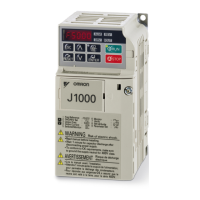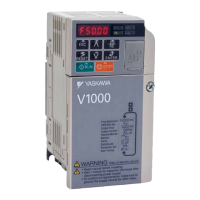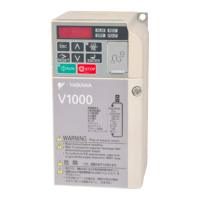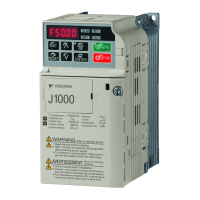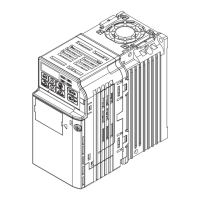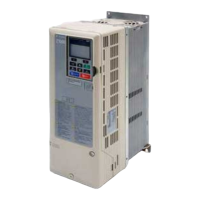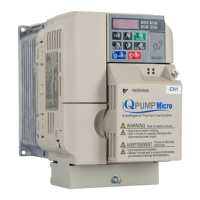1.3 Features and Advantages of Control Methods
26 YASKAWA SIEPC71061753C GA500 Technical Manual
Control Method
Selection
PM Open Loop Vector
Control
(OLV/PM)
PM Advanced Open Loop
Vector
(AOLV/PM)
EZ Open Loop Vector Control
(EZOLV)
Notes
Controlled Motor PM motor
Induction Motors/PM Motors/
SynRM (Synchronous
Reluctance Motors)
-
Torque Limits
*5
No Yes Yes
Controls maximum motor torque to
prevent damage to machines and loads.
Speed Search
*5
Yes Yes
Yes (Although NOT operation in
the reverse direction of the Run
command)
Immediately estimates (or detects) motor
speed and direction when coasting to a
stop to quickly start-up the drive without
stopping the motor.
Automatic Energy-
saving Control
*5
No Yes (IPM motors only) Yes
Automatically adjusts the voltage that the
drive applies to the motor to maximize
motor efficiency for small and large loads.
High Slip Braking
(HSB) Activate
No (induction motor-specific
function)
No (induction motor-specific
function)
No
Increases motor loss to let the motor
decelerate faster than usual without a
braking resistor. Motor characteristics have
an effect on this function.
Feed Forward Control
*5
No Yes No
Compensates effects of the system inertia
to increase the speed precision when the
load changes.
KEB Ride-Thru
Function
*5
Yes Yes Yes
Quickly and safely stops the motor during
power loss and automatically starts
operation at the previous speed when the
drive applies power again without coasting
the motor.
Overexcitation
Deceleration
No (induction motor-specific
function)
No (induction motor-specific
function)
No
Sets the V/f higher than the setting value
during deceleration to increase motor loss
and decrease deceleration time.
Overvoltage
Suppression Function
*5 *6
Yes Yes Yes
Adjusts speed during regeneration to
prevent overvoltage.
*1 Enabled when n8-57 = 1 [HFI Overlap Selection = Enabled].
*2 Rotational Auto-Tuning is necessary.
*3 Contact Yaskawa or your nearest sales representative to drive non-Yaskawa PM motors (SSR1 series standard specifications).
*4 Select the drive capacity accordingly.
*5 Note these points when you use this function:
• When you can decouple the motor and machine for a test run, use Rotational Auto-Tuning. You must make adjustments to the
control in the range where there is no vibration in the machine after Rotational Auto-Tuning.
• For vector control, use a 1:1 drive to motor ratio. You cannot use vector control when more than one motor is connected to one
drive. Select a drive capacity so that the motor rated current is 50% to 100% of the drive rated current. If the carrier frequency is
too high, the drive rated current is derated.
*6 Do not use this function with hoist application.
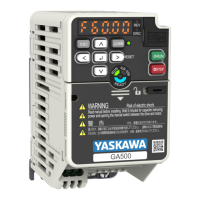
